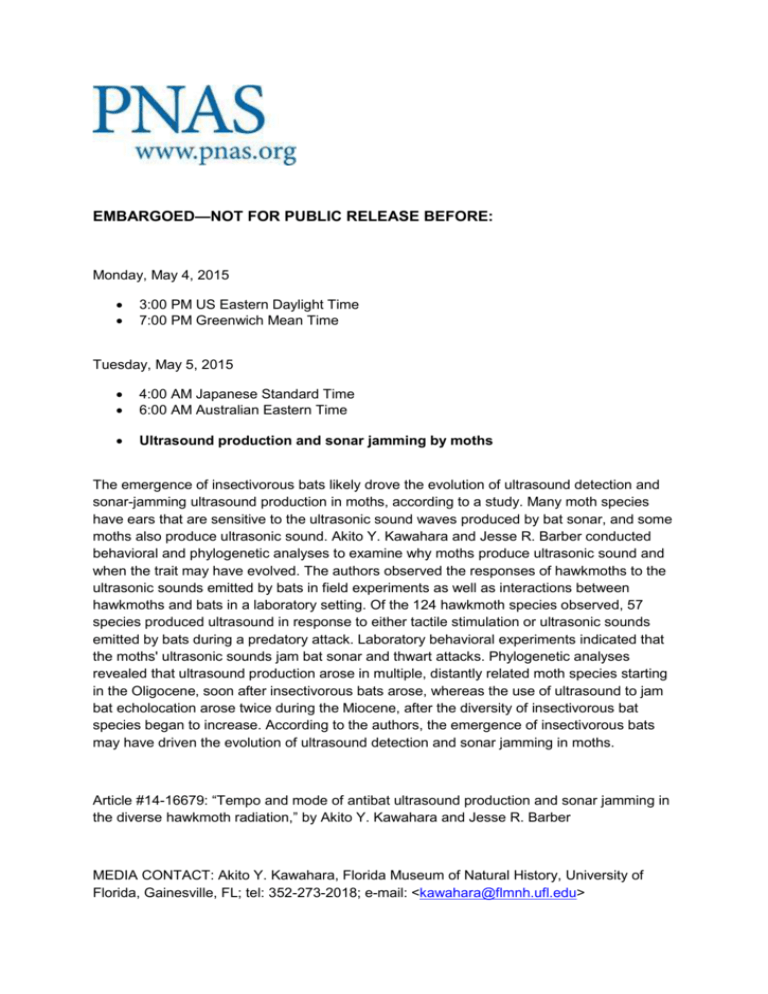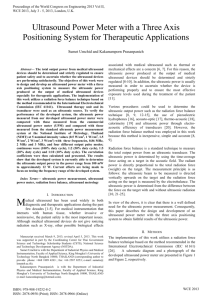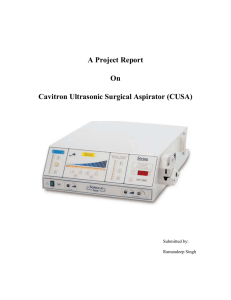Media Release
advertisement

EMBARGOED—NOT FOR PUBLIC RELEASE BEFORE: Monday, May 4, 2015 3:00 PM US Eastern Daylight Time 7:00 PM Greenwich Mean Time Tuesday, May 5, 2015 4:00 AM Japanese Standard Time 6:00 AM Australian Eastern Time Ultrasound production and sonar jamming by moths The emergence of insectivorous bats likely drove the evolution of ultrasound detection and sonar-jamming ultrasound production in moths, according to a study. Many moth species have ears that are sensitive to the ultrasonic sound waves produced by bat sonar, and some moths also produce ultrasonic sound. Akito Y. Kawahara and Jesse R. Barber conducted behavioral and phylogenetic analyses to examine why moths produce ultrasonic sound and when the trait may have evolved. The authors observed the responses of hawkmoths to the ultrasonic sounds emitted by bats in field experiments as well as interactions between hawkmoths and bats in a laboratory setting. Of the 124 hawkmoth species observed, 57 species produced ultrasound in response to either tactile stimulation or ultrasonic sounds emitted by bats during a predatory attack. Laboratory behavioral experiments indicated that the moths' ultrasonic sounds jam bat sonar and thwart attacks. Phylogenetic analyses revealed that ultrasound production arose in multiple, distantly related moth species starting in the Oligocene, soon after insectivorous bats arose, whereas the use of ultrasound to jam bat echolocation arose twice during the Miocene, after the diversity of insectivorous bat species began to increase. According to the authors, the emergence of insectivorous bats may have driven the evolution of ultrasound detection and sonar jamming in moths. Article #14-16679: “Tempo and mode of antibat ultrasound production and sonar jamming in the diverse hawkmoth radiation,” by Akito Y. Kawahara and Jesse R. Barber MEDIA CONTACT: Akito Y. Kawahara, Florida Museum of Natural History, University of Florida, Gainesville, FL; tel: 352-273-2018; e-mail: <kawahara@flmnh.ufl.edu> Images and videos available AFTER THIS ARTICLE PUBLISHES, it will be available at http://www.pnas.org/cgi/doi/10.1073/pnas.1416679112
![Jiye Jin-2014[1].3.17](http://s2.studylib.net/store/data/005485437_1-38483f116d2f44a767f9ba4fa894c894-300x300.png)










